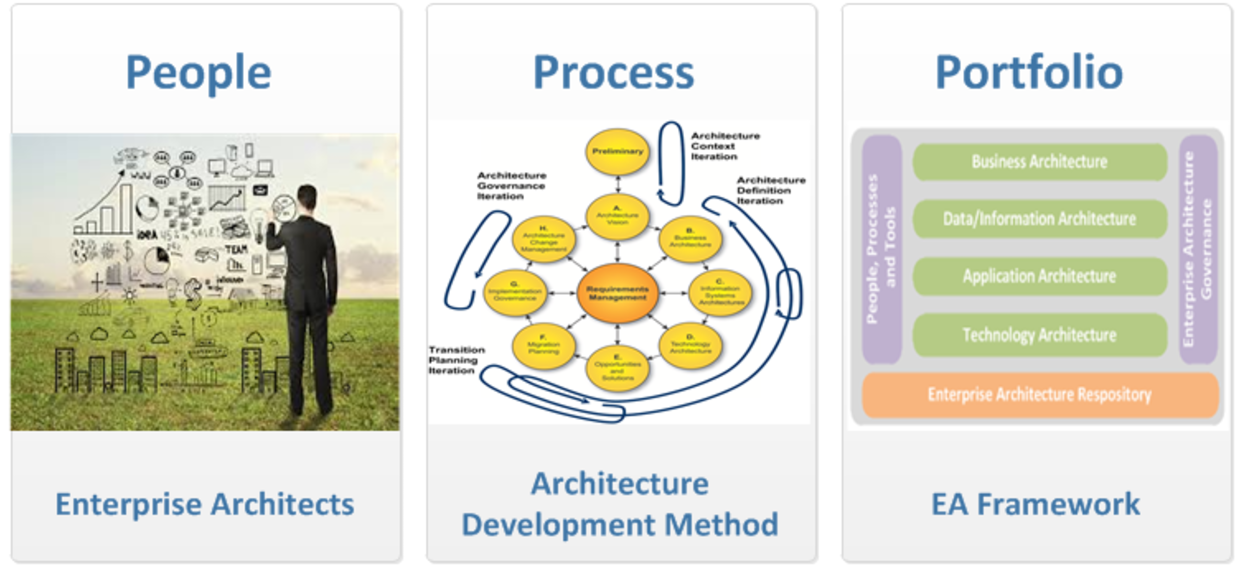The Office of the Chief Technology Officer (CTO) is responsible for Enterprise Architecture: setting enterprise-wide vision and strategy for Columbia University Information Technology as a whole. We build consensus and develop collegial, collaborative working relationships with a broad range of constituencies in support of the University mission and ensure that the institution has the optimal technology direction. The Office of the CTO uses a three-pronged people, process and portfolio approach toward achieving this goal, as shown below.

People, Process and Portfolio Approach
Mission
Enable University mission and business outcomes by building comprehensive technology and architectural governance models coupled with a decision framework aligned with the University and IT mission, vision and strategy.
Enable use of shared services across Columbia University to minimize cost and build operational excellence.
Develop University IT strategy collaboratively with University IT groups and document approach in published white papers.
Strengthen the EA foundation by using standard frameworks like TOGAF, ITSM, DevOps and Agile and by providing guidance to the Information Technology Leadership Council (ITLC), Enterprise Architecture Committee and CU business units.
Provide business architecture as service for business units to help model their business capabilities and processes. Effective business processes help drive operational efficiencies and help the business functions deliver their strategic objectives.
Help business leaders understand new opportunities and partner with them, as needed, for building transformational models to reap successful business outcomes.
Partner with peer US universities to introduce and promote significant technical initiatives through membership in consortia such as the Common Solutions Group, Ivy Plus, NYSERNet, Internet2 and Educause.
Our Services
Pagination
Enterprise Architecture Standards
Responsibilities
Architecture Library
- Principles
- Standards
- Templates
- Patterns
- Technology Catalog
Focused Working Groups
- Form working groups
- Engage participants
- Generate artifacts
- Communicate outcomes
Enterprise Architecture Development
- Architecture repository
- Operationalize architecture
- Manage dispensations/exceptions
- Build matrices
Cloud Computing Enablement
- Processes
- Procedures
- Data Integration
Business Architecture as Service
- Capability/Process Modeling
- Process Design
Tool Evaluation
- Architecture Justification
- Security Justification
- Approval Workflows
Technology and Architecture Governance
Through forums such as:
- AAG (Architecture Assessment Group)
- ASC (Architecture Steering Committee)
- ITLC-EA (IT Leadership Council EA Sub-committee)
- AEA NY Metro Chapter

